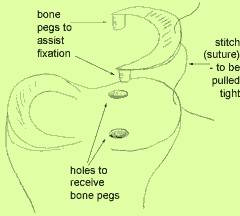Problems with Meniscus Allografts Surface
The knee meniscus is a spacer that protects the knee cartilage. Regrettably, we still have a surgical culture that cuts out parts of a torn meniscus, despite research demonstrating that removing parts of the meniscus leads to more knee arthritis. To try and fix the problem of a surgically removed or degenerated meniscus, meniscus allografts have been used. These are cadaver meniscus parts that are implanted surgically in the knee to provide a new spacer to protect cartilage. These are usually frozen until ready to be used. However, a recent research study calls into question whether the common freezing method used kills the important cells in the meniscus that would allow it to survive in the knee. Meniscus tissue is made of of living cells that are needed to repair the meniscus from damage caused by normal wear and tear. Remove the cells from the equation, and the spacer will quickly get chewed up by normal activities because it doesn’t have the ability to fix normal damage. This study demonstrated that the cells inside these frozen meniscus implants were about 50 times more “apoptotic” (meaning dead or dying) than a fresh meniscus. The upshot? One of the meniscus allograft replacement surgery risks is that the meniscus tissue won’t “take” and will be quickly torn. A meniscus transplant that will survive long-term in the body needs viable cells. An alternate route is to augment the decellularized meniscus with stem cells capable to engrafting and surviving. This has already been accomplished in an animal model. In this study, they took a meniscus where all of the cells had been removed and repopulated it with bone marrow stem cells. The researchers observed very nice biologic replacement of the original meniscus where the cells survived. In summary, this new study showed that most of the cells in a frozen cadaver meniscus of the type commonly used in meniscus allograft replacement surgery are dead or dying. This calls into question whether what we’re doing now with meniscus transplants is worth the invasive surgery.

If you have questions or comments about this blog post, please email us at [email protected]
NOTE: This blog post provides general information to help the reader better understand regenerative medicine, musculoskeletal health, and related subjects. All content provided in this blog, website, or any linked materials, including text, graphics, images, patient profiles, outcomes, and information, are not intended and should not be considered or used as a substitute for medical advice, diagnosis, or treatment. Please always consult with a professional and certified healthcare provider to discuss if a treatment is right for you.
